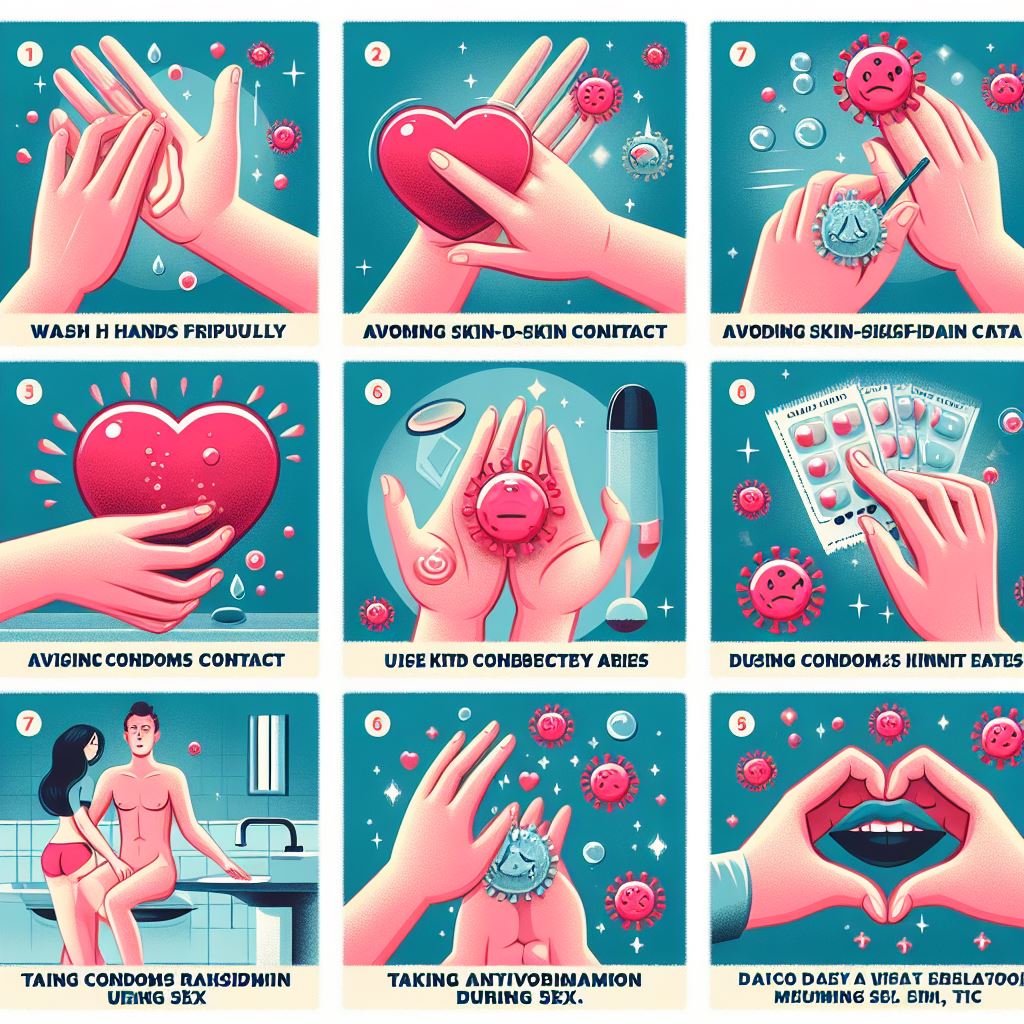How is Herpes Transmitted In 2024?
Herpes infections affect nearly 1 in 6 individuals aged 14-49 in the United States. How is Herpes Transmitted In 2024? This highly contagious virus spreads through direct skin contact and can lead to lifelong complications. Understanding how herpes transmits enables you to lower risks for yourself and partners.
Herpes Fundamentals
Herpes refers to two common viral strains: HSV-1 and HSV-2. While HSV-1 primarily causes oral herpes and HSV-2 genital herpes, either type can infect both areas. Herpes expenditures in the U.S. reach $1 billion annually when factoring medical bills, prescription drugs, and lost wages.
After initial infection, the herpes virus becomes dormant inside nerve cells. Periodic reactivation leads to recurrent symptoms including blisters and ulcers. Currently no cure exists, but medications can reduce outbreak frequency and severity.
The Emotional Toll
Beyond physical effects, herpes takes an emotional toll. Many individuals experience depression, anxiety, anger, guilt, and relationship problems after diagnosis. Negative stereotypes, fears of disclosure, and transmittal concerns contribute to emotional distress.
Joining a herpes support group provides community and resources for navigating emotional and social challenges. With understanding and open communication, individuals with herpes can maintain fulfilling interpersonal relationships.
Testing Options
Seeing a healthcare provider allows access to herpes testing options. Viral cultures analyze active blister fluid for presence of the virus. Blood tests detect antibodies produced in response to HSV infection.
Because blood tests cannot specify the bodily location of infection, additional testing may be needed. Getting tested and sharing positive results enables partners to make informed choices regarding sexual health.
Sexual Transmission of Herpes
Skin-to-skin contact during oral, vaginal, or anal sex provides the most common route of herpes transmission. Contact with active blisters or shedding invisible viral particles can spread HSV between partners.
Genital-to-Genital Transmission
Genital-to-genital contact spreads both HSV-1 and HSV-2. Although using condoms significantly reduces risk, viral shedding can still occur on genital areas not covered by the condom.
Antiviral medications lower asymptomatic viral shedding by roughly 50%. Avoiding sex during outbreaks also decreases transmission probability. However, since viral shedding occurs even without symptoms, sex with an infected partner always poses some degree of risk.
Oral-to-Genital Transmission
Oral sex with a partner with oral herpes can transmit HSV-1 to the genitals. Sores or viral shedding in the mouth can pass infection on to the genital region. Using condoms or dental dams reduces but does not eliminate risk.
Partners should also avoid oral sex during visible cold sores or prodrome symptoms like tingling. Antiviral drugs can decrease shedding from oral herpes. Frequent hand washing also minimizes self-inoculation from the mouth to genitals.
Non-Sexual Spread of Herpes
Herpes spreads through non-sexual skin contact as well. Simply touching active herpes blisters or shedding skin can transfer viral particles. Transmission risk increases if the contact subsequently touches eyes, mouth, genitals, or open cuts.
Casual Transmission
Sharing drinks, lip balm, or utensils with someone who has oral herpes easily spreads HSV-1. Directly kissing someone with an oral herpes outbreak or prodrome symptoms poses high risk for viral transmission.
Using proper hand hygiene, avoiding touching active sores, and not sharing personal items minimize casual herpes spread. Refraining from kissing those with evident cold sores or questionable symptoms also reduces risk.
Sports Transmission
The skin-to-skin contact involved in many sports facilitates herpes spread. Wrestlers and rugby players often develop herpes gladiatorum, a form of HSV-1 transmitted through close contact during sports.
Showering immediately after competition, washing sports uniforms promptly, and disinfecting equipment between uses all help lower transmission risk. Athletes should also promptly report skin lesions to prevent further team outbreaks.
Herpes Transmission During Childbirth
Pregnant women with genital herpes can transmit the virus to infants during vaginal delivery. Evidence suggests 10% to 27% of neonatal herpes cases result from vertical transmission during childbirth.
Risk Factors
Transmission risk rises significantly if the mother has visible herpes lesions or prodromal symptoms at delivery. A first-time maternal herpes infection during late pregnancy poses the highest neonatal transmission risk.
Mothers who acquire genital herpes before pregnancy and have recurrent infections with viral shedding also have elevated transmission potential. However, the overall risk remains low at under 1% with suppressive antiviral therapy.
Prevention Strategies
For pregnant women with active genital herpes lesions at delivery, C-sections dramatically reduce neonatal transmission risk. Antiviral drugs in the final weeks of pregnancy further lower odds of transmission.
Beyond medical interventions, pregnant women can reduce transmission odds by carefully monitoring genital herpes signs and promptly treating outbreaks. Open communication with obstetric providers ensures ideal prevention planning.
Shared Items and Herpes Transmission
Indirect herpes transmission from shared items remains unlikely but possible. Within seconds of shedding from the skin, herpes virus particles can survive on tissues, towels, razors, and other objects.
Reducing Household Transmission
Laundering towels, bedding, and clothing regularly in hot water kills any herpes viral particles, making home transmission unlikely. Cleaning bathroom surfaces, doorknobs, and countertops also minimizes spread.
Avoiding sharing personal care items like razors and toothbrushes prevents indirect transmission. Proper hand hygiene after touching shared objects or surfaces further reduces risks.
Minimizing Public Transmission
Use barriers like disposable seat covers or towels at public gyms, spas, and salons. Wiping down surfaces and machines pre and post-use also helps reduce risks. Avoid sharing or borrowing clothing at public pools and locker rooms.
Practicing hand hygiene after touching public surfaces like door handles and railings minimizes the chance of self-inoculation. While less likely, it is possible to pick up viral particles in public places.
Protecting Yourself and Others
Understanding all the ways herpes spreads allows you to lower transmission risks through preventive actions. While herpes remains highly contagious and incurable, individuals can manage infection through medication, communication, and precaution.
Those diagnosed with herpes should recognize symptoms, get counseling if needed, disclose to partners, and use proven risk reduction methods. Public education also plays a key role in stopping stigma so those with herpes can live full, healthy lives.
References
1. “Genital Herpes – CDC Fact Sheet.” Centers for Disease Control and Prevention, Centers for Disease Control and Prevention, 8 Jan. 2022, https://www.cdc.gov/std/herpes/stdfact-herpes.htm.
2. Johnston, Carol, et al. “Herpes Simplex Virus.” Annals of Internal Medicine, vol. 160, no. 9, 30 Apr. 2014, pp. ITC1–ITC16., doi:10.7326/0003-4819-160-9-201405060-01007.
3. “Herpes Simplex.” Wikipedia, Wikimedia Foundation, 11 Jan. 2023, https://en.wikipedia.org/wiki/Herpes_simplex.





